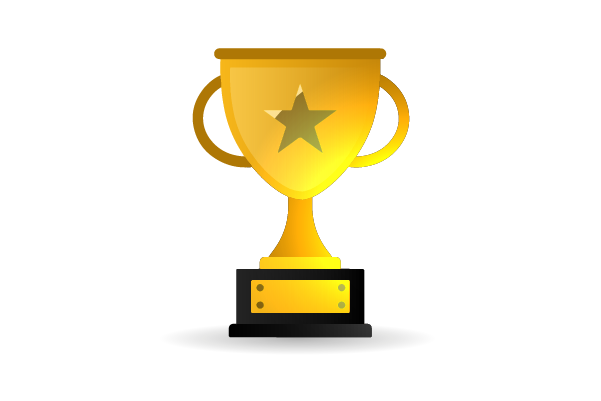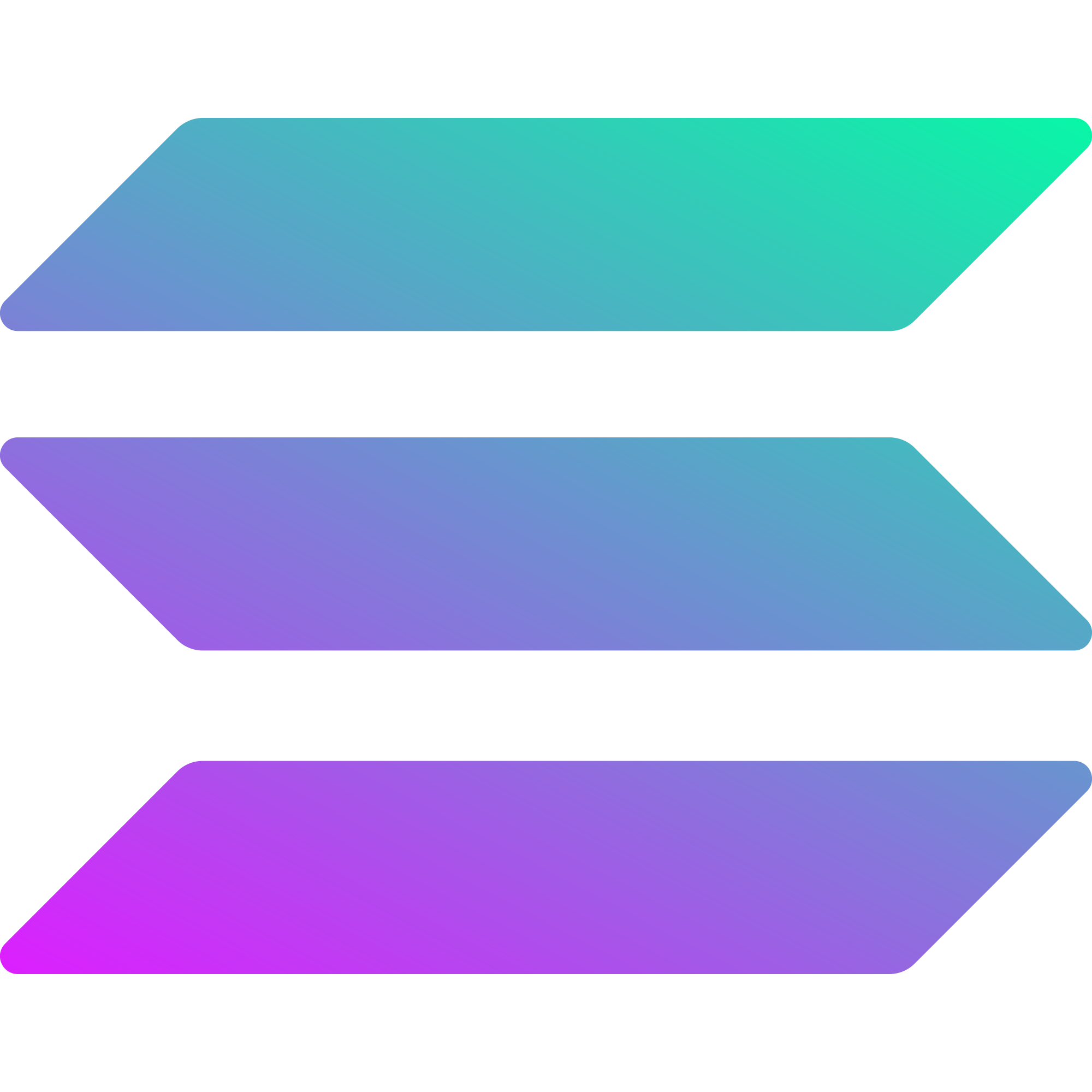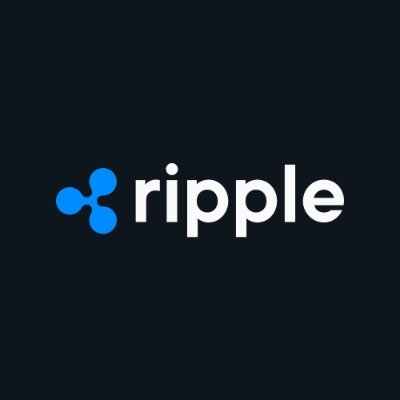Disclaimer: The information provided by Snap Innovations in this article is intended for general informational purposes and does not reflect the company’s opinion. It is not intended as investment advice or recommendations. Readers are strongly advised to conduct their own thorough research and consult with a qualified financial advisor before making any financial decisions.
Top 17 List of Layer 1 Blockchains You Should Know in 2025

Layer 1 blockchains represent the foundational networks of the blockchain ecosystem, providing essential infrastructure for decentralized applications, smart contracts, and secure transactions. As demand for scalability, speed, and low-cost transactions rises, these Layer 1 solutions lead the charge with diverse approaches to consensus, governance, and innovation. This list of the top 17 list of Layer 1 blockchains highlights the most influential platforms shaping the blockchain landscape today, from established giants like Ethereum and Solana to emerging challengers like HeLa and Ton, each competing to set new standards for performance and utility.
This list of the top 17 Layer 1 blockchains spotlights industry, each offering unique solutions for today’s digital challenges. With different approaches to consensus models, transaction speeds, and network security, these blockchains are redefining the standards of performance and efficiency. Together, they form a diverse ecosystem, influencing everything from DeFi and NFTs to global supply chains and cross-border payments, making them essential to know for anyone following blockchain technology’s evolution.
What is Layer 1?
 Layer 1 refers to the base layer or main framework of a blockchain network. It’s like the foundation of a house that supports everything built on top of it. Examples of Layer 1 blockchains include Bitcoin, Ethereum, and HeLa Chain. These networks handle things like transaction processing, security, and consensus without relying on any external systems. They’re decentralized, meaning they operate without a central authority, and use cryptography and network validators to ensure the system stays secure.
Layer 1 refers to the base layer or main framework of a blockchain network. It’s like the foundation of a house that supports everything built on top of it. Examples of Layer 1 blockchains include Bitcoin, Ethereum, and HeLa Chain. These networks handle things like transaction processing, security, and consensus without relying on any external systems. They’re decentralized, meaning they operate without a central authority, and use cryptography and network validators to ensure the system stays secure.
Since Layer 1 blockchains are the backbone of crypto networks, they handle a lot of traffic, which can sometimes slow things down. To solve this, developers work on ways to improve scalability, such as creating Layer 2 solutions. Think of it like adding extra lanes to a highway to ease congestion. Layer 1 is super important because it’s the foundation on which everything else is built in the blockchain world.
Importance of Layer 1
 Layer 1 is essential because it forms the core infrastructure of blockchain networks. Without it, decentralized applications (dApps), smart contracts, and cryptocurrencies wouldn’t have a foundation to function on. It’s responsible for ensuring security, verifying transactions, and maintaining consensus across the network. As the base layer, Layer 1 guarantees that all activities on the blockchain are processed reliably and securely, creating trust in the entire system. If Layer 1 doesn’t work efficiently, the whole ecosystem suffers.
Layer 1 is essential because it forms the core infrastructure of blockchain networks. Without it, decentralized applications (dApps), smart contracts, and cryptocurrencies wouldn’t have a foundation to function on. It’s responsible for ensuring security, verifying transactions, and maintaining consensus across the network. As the base layer, Layer 1 guarantees that all activities on the blockchain are processed reliably and securely, creating trust in the entire system. If Layer 1 doesn’t work efficiently, the whole ecosystem suffers.
Read More: Top 10 Blockchain Consulting Firms to Know in 2025
The scalability of Layer 1 is also crucial as it handles the massive load of transactions and activities. When the network gets congested due to high traffic, it can lead to slower transaction times and higher fees. Improving Layer 1 or integrating solutions like Layer 2 helps keep the network running smoothly as more users and projects join. In short, Layer 1 is vital for blockchain’s growth, performance, and security, making it a fundamental piece of the crypto and blockchain puzzle.
Layer 1 vs Layer 2
 Layer 1 and Layer 2 refer to different levels in blockchain technology, each serving a unique purpose. Layer 1 is the base layer of a blockchain, such as Bitcoin or Ethereum, and it handles the essential functions like security, consensus, and transaction validation. All the core activities of the network take place here. However, as more users and transactions flood these networks, Layer 1 can struggle with speed and scalability, leading to higher fees and slower processing times. So, while Layer 1 ensures security and decentralization, it often faces challenges with scaling.
Layer 1 and Layer 2 refer to different levels in blockchain technology, each serving a unique purpose. Layer 1 is the base layer of a blockchain, such as Bitcoin or Ethereum, and it handles the essential functions like security, consensus, and transaction validation. All the core activities of the network take place here. However, as more users and transactions flood these networks, Layer 1 can struggle with speed and scalability, leading to higher fees and slower processing times. So, while Layer 1 ensures security and decentralization, it often faces challenges with scaling.
Layer 2, on the other hand, is built on top of Layer 1 to enhance its efficiency. It’s like an extra lane on a busy highway. Layer 2 solutions, such as the Lightning Network on Bitcoin or Optimistic Roll Ups on Ethereum, handle a portion of transactions off-chain or in parallel to ease the load on the main network. This speeds things up and lowers transaction costs without compromising the security and integrity provided by Layer 1. Essentially, Layer 2 helps scale Layer 1 networks, making them faster and more usable without requiring fundamental changes to the original blockchain.
Top 17 List of Layer 1 Blockchains You Should Know in 2025

Layer 1 blockchains represent the foundational networks of the blockchain ecosystem, providing essential infrastructure for decentralized applications, smart contracts, and secure transactions. As demand for scalability, speed, and low-cost transactions rises, these Layer 1 solutions lead the charge with diverse approaches to consensus, governance, and innovation. This list of the top 17 list of Layer 1 blockchains highlights the most influential platforms shaping the blockchain landscape today, from established giants like Ethereum and HeLa to emerging challengers like Solana and Avalanche, each competing to set new standards for performance and utility.
1. HeLa Labs

HeLa stands out as a modular Layer 1 blockchain, enabling AI infrastructure for Web2 and Web3 applications across multiple sectors, including gaming, decentralized finance (DeFi), and decentralized physical infrastructure networks (DePIN). It offers a seamless platform for developers to build applications that integrate AI capabilities into blockchain environments, promoting innovation and efficiency.
- Modular design allows easy integration of AI features.
- Optimized for Web2 and Web3 developers.
- Multisector application: gaming, DeFi, DePIN, and more.
- High scalability and security.
- Support for cross-chain interoperability.
2. Ethereum
Ethereum is the world’s most popular Layer 1 blockchain after Bitcoin, with a focus on enabling smart contracts and decentralized applications. The recent transition to Ethereum 2.0 has significantly improved scalability, energy efficiency, and security, making it a leading blockchain platform for various projects.
- Extensive developer community.
- Smart contract functionality.
- Supports a wide range of dApps.
- PoS upgrade via Ethereum 2.0.
- Native cryptocurrency: Ether (ETH).
3. Solana

Solana aims to solve blockchain scalability problems by using a unique Proof-of-History (PoH) consensus mechanism. Solana’s scalability has made it an attractive platform for DeFi, NFT projects, and other high-throughput applications.
- Uses Proof-of-History (PoH) and Proof-of-Stake (PoS).
- High transaction throughput.
- Low transaction fees.
- Growing DeFi and NFT ecosystem.
- Attractive to developers building high-performance applications.
4. BNB Chain

BNB Chain, previously known as Binance Smart Chain, is a fast and low-cost Layer 1 blockchain developed by Binance. It supports a range of DeFi projects, dApps, and more, making it a favorite among developers who require lower transaction costs and high throughput.
- Dual-chain architecture with Binance Chain.
- Supports smart contracts and dApps.
- High-speed transactions with lower fees.
- Built for DeFi and NFTs.
- Compatible with Ethereum Virtual Machine (EVM).
5. Ripple

Ripple is a digital payment protocol and blockchain-based platform designed to enable fast, low-cost cross-border transactions for financial institutions. Unlike traditional blockchains, Ripple’s XRP Ledger uses a unique consensus protocol that does not rely on proof-of-work or proof-of-stake, allowing it to achieve high speeds and scalability. Ripple’s native token, XRP, acts as a bridge currency, facilitating instant transfers across different fiat currencies, which makes it appealing for banks and financial service providers looking to streamline international payments.
- Fast Cross-Border Transactions: Enables near-instant international payments, significantly faster than traditional methods.
- Low Transaction Fees: Minimal fees, making it cost-effective for financial institutions.
- XRP Ledger: Uses a unique consensus mechanism, not reliant on mining, allowing for high-speed transactions.
- Bridge Currency (XRP): XRP acts as a bridge for transferring value across different currencies.
- Financial Institution Focus: Designed specifically to serve banks and payment providers in streamlining global transfers.
- High Scalability: Capable of handling thousands of transactions per second.
6. Cardano

Cardano is a highly scalable and sustainable Layer 1 blockchain platform designed for smart contracts and decentralized applications. Developed through a research-driven approach, Cardano employs a unique proof-of-stake consensus mechanism called Ouroboros, which enhances energy efficiency compared to traditional proof-of-work systems. The platform focuses on security, scalability, and interoperability, making it suitable for various applications, from finance to identity verification. With its robust governance model and emphasis on peer-reviewed research, Cardano aims to create a balanced ecosystem that addresses the needs of users and developers alike.
- Scalable Architecture: Designed to support a large number of transactions per second.
- Ouroboros Consensus Mechanism: Utilizes proof-of-stake for energy-efficient validation.
- Focus on Sustainability: Aims to create a long-lasting ecosystem for decentralized applications.
- Peer-Reviewed Development: Emphasizes research-driven progress and academic validation.
- Robust Governance Model: Incorporates community input for decision-making processes.
- Interoperability: Designed to interact seamlessly with other blockchains and legacy systems.
7. SUI Network

Sui is a next-generation Layer 1 blockchain designed to deliver high-speed, low-cost transactions for decentralized applications. Leveraging a unique Move-based programming model, Sui focuses on scalability and security, enabling developers to create secure, high-performance dApps that can handle complex on-chain operations efficiently. One of its core features is its ability to process transactions in parallel, allowing it to scale horizontally, which significantly enhances throughput. As part of the new wave of blockchains, Sui aims to address the scalability and usability needs of the modern decentralized ecosystem.
- Parallel Transaction Processing: Allows high throughput by executing transactions simultaneously, boosting scalability.
- Move-based Programming Model: Built on the Move language, designed for secure, efficient smart contracts.
- Horizontal Scalability: Scales with network growth, enhancing performance without congestion.
- Low Transaction Costs: Efficient design to keep transaction fees minimal.
- Developer-Friendly: Supports high-performance dApps with complex on-chain operations.
- Enhanced Security: Focuses on safe transaction handling to protect users and developers.
8. TON
TON, or The Open Network, is an innovative blockchain platform initially developed by Telegram, designed to facilitate fast, secure, and scalable decentralized applications (dApps). Its architecture is unique, featuring a multi-blockchain setup that includes a masterchain and multiple customizable workchains, allowing it to handle millions of transactions per second through a sharding mechanism. This scalability is further enhanced by its Proof-of-Stake (PoS) consensus, which ensures quick transaction processing and energy efficiency compared to traditional Proof-of-Work systems
- Scalability: With its sharding technology, TON can process a vast number of transactions simultaneously, making it ideal for high-demand applications.
- Interoperability: TON is designed to seamlessly integrate with other blockchains, enabling asset and data transfers across networks, which is vital for a connected decentralized ecosystem.
- Fast Transactions: Thanks to its PoS consensus mechanism, transactions are processed almost instantly, supporting various financial activities like payments and microtransactions.
- Decentralization: Governed by its community rather than a single entity, TON offers a robust framework resistant to attacks, ensuring accessibility and open participation for users
9. Avalanche

Avalanche is a highly scalable Layer 1 platform offering near-instant transaction finality and high throughput. It supports a broad range of projects, including financial applications, gaming, and asset tokenization. Its “subnet” architecture allows developers to build their own blockchains and applications.
- “Subnet” feature for creating custom blockchains.
- Proof-of-Stake consensus.
- High scalability and fast finality.
- DeFi, gaming, and enterprise applications.
- Native token: AVAX.
Read Next: 7 Best Stablecoins in the Crypto Market for 2025
10. Polkadot

Polkadot is a Layer 1 blockchain that connects multiple specialized blockchains into a unified network, fostering true interoperability. This unique feature allows data and assets to be transferred seamlessly across different blockchains, expanding the possibilities of decentralized applications.
- Interoperable with multiple blockchains.
- Uses a parachain architecture.
- High scalability and security.
- Supports cross-chain data transfer.
- Native token: DOT.
11. Near

Near Protocol is a scalable Layer 1 blockchain designed for ease of use and developer accessibility. It uses sharding to achieve high transaction throughput and has a developer-friendly environment that encourages the creation of dApps.
- Sharding for scalability.
- Developer-friendly environment.
- Low transaction fees.
- Supports dApps and DeFi.
- Native token: NEAR.
12. Injective

Injective is a decentralized Layer 1 blockchain built for financial applications, including DeFi, derivatives, and decentralized trading. It offers high-speed transactions and interoperability across various blockchain ecosystems, making it a popular choice for financial projects.
- Built for financial applications and DeFi.
- High-speed transactions.
- Interoperable with multiple blockchains.
- Decentralized exchange capabilities.
- Native token: INJ.
13. Cosmos

Cosmos refers to itself as the “Internet of Blockchains,” allowing multiple chains to communicate and share data seamlessly. Its interoperability feature makes it ideal for building scalable decentralized networks and promoting cross-chain collaboration.
- Interoperability across different blockchains.
- Cosmos SDK for easy development.
- Tendermint consensus mechanism.
- Supports DeFi and NFTs.
- Native token: ATOM.
14. Cronos

Cronos is a Layer 1 blockchain built by Crypto.com, offering fast and low-cost transactions while supporting DeFi and NFTs. It is compatible with the Ethereum Virtual Machine (EVM) and the Cosmos SDK, making it versatile for developers who want to bridge different blockchain ecosystems.
- EVM and Cosmos SDK compatibility.
- Fast transactions and low fees.
- Focus on DeFi and NFTs.
- Supported by Crypto.com.
- Native token: CRO.
15. Kadena

Kadena is a hybrid Layer 1 blockchain that offers both public and private blockchain features. Its unique chain architecture is designed to provide high throughput and scalability while maintaining security, making it suitable for enterprise-level applications.
- Hybrid public and private blockchain.
- High throughput and scalability.
- Pact smart contract language.
- Enterprise-level use cases.
- Native token: KDA.
16. Flare Network

Flare Network is a Layer 1 blockchain that focuses on integrating data from other blockchains and the internet into smart contracts. It aims to connect blockchain ecosystems, providing a bridge for smart contracts to access data outside their native blockchain.
- Integrates off-chain data into smart contracts.
- Connects multiple blockchain ecosystems.
- Built for interoperability.
- Focus on DeFi and cross-chain solutions.
- Native token: FLR.
17. 5ire

5ire is a sustainable Layer 1 blockchain that focuses on promoting sustainability and the UN’s Sustainable Development Goals (SDGs). It uses a Proof-of-Benefit consensus mechanism to prioritize environmental and social impact.
- Focus on sustainability and SDGs.
- Proof-of-Benefit consensus mechanism.
- Promotes social and environmental benefits.
- Low energy consumption.
- Native token: 5IRE.
Conclusion
Layer 1 blockchains are the backbone of decentralized technology, setting the foundation for everything from security to scalability. They ensure that decentralized apps can function smoothly while offering robust protection and transaction processing. Without these core layers, the blockchain space simply wouldn’t be able to support the thriving innovations we see today.
By providing the base layer for scalability, security, and innovation, these projects enable the creation of decentralized applications that can disrupt industries and redefine how we interact with technology. By providing the base layer for scalability, security, and innovation, these projects enable the creation of decentralized applications that can disrupt industries and redefine how we interact with technology. As new Layer 1 solutions continue to emerge, they will further strengthen the infrastructure that supports a decentralized and inclusive digital future.
FAQs
- How do Layer 1 blockchains differ from Layer 2 solutions?
Layer 1 blockchains form the core of the blockchain network, handling on-chain transactions and maintaining network security. Layer 2 solutions are built on top of Layer 1 to address scalability issues by processing transactions off-chain, thus reducing the load on the main blockchain.
- What is the difference between Proof-of-Stake (PoS) and Proof-of-Work (PoW) in Layer 1 blockchains?
Proof-of-Work (PoW) and Proof-of-Stake (PoS) are consensus mechanisms used by Layer 1 blockchains. PoW requires miners to solve complex puzzles to validate transactions (used by Bitcoin), while PoS relies on validators holding a certain amount of cryptocurrency to validate transactions (used by Ethereum 2.0).
- Can Layer 1 blockchains support smart contracts?
Yes, many Layer 1 blockchains like Ethereum, Solana, and Astar support smart contracts, which allow developers to build decentralized applications that can automate processes and execute agreements without intermediaries.[/vc_column_text][/vc_column][/vc_row]
